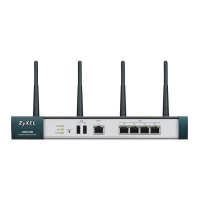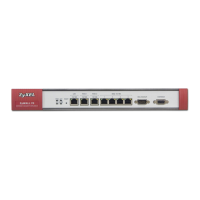Chapter 7 Wireless
XMG3512-B10A User’s Guide
89
Click Network Setting > Wireless to display the General screen. Select More Secure as the security level.
Then select WPA-PSK or WPA2-PSK from the Security Mode list.
Figure 35 Wireless > General: More Secure: WPA(2)-PSK
The following table describes the labels in this screen.
7.3 The Guest/More AP Screen
This screen allows you to enable and configure multiple Basic Service Sets (BSSs) on the XMG.
Click Network Setting > Wireless > Guest/More AP. The following screen displays.
Table 20 Wireless > General: More Secure: WPA(2)-PSK
LABEL DESCRIPTION
Security Level Select More Secure to enable WPA(2)-PSK data encryption.
Security Mode Select WPA-PSK or WPA2-PSK from the drop-down list box.
Generate
password
automatically
Select this option to have the XMG automatically generate a password. The password field will
not be configurable when you select this option.
Password The encryption mechanisms used for WPA(2) and WPA(2)-PSK are the same. The only difference
between the two is that WPA(2)-PSK uses a simple common password, instead of user-specific
credentials.
If you did not select Generate password automatically, you can manually type a pre-shared key
from 8 to 64 case-sensitive keyboard characters. Select password unmask to display the entered
password in plain text. Clear it to hide the password to avoid shoulder surfing.
more.../hide Click more... to show more fields in this section. Click hide to hide them.
Encryption Select the encryption type (TKIP, AES or TKIP+AES) for data encryption.
Select TKIP if your wireless clients can all use TKIP.
Select AES if your wireless clients can all use AES.
Select TKIP+AES to allow the wireless clients to use either TKIP or AES.
Group Key
Update Timer
The Group Key Update Timer is the rate at which the RADIUS server sends a new group key out to
all clients.

